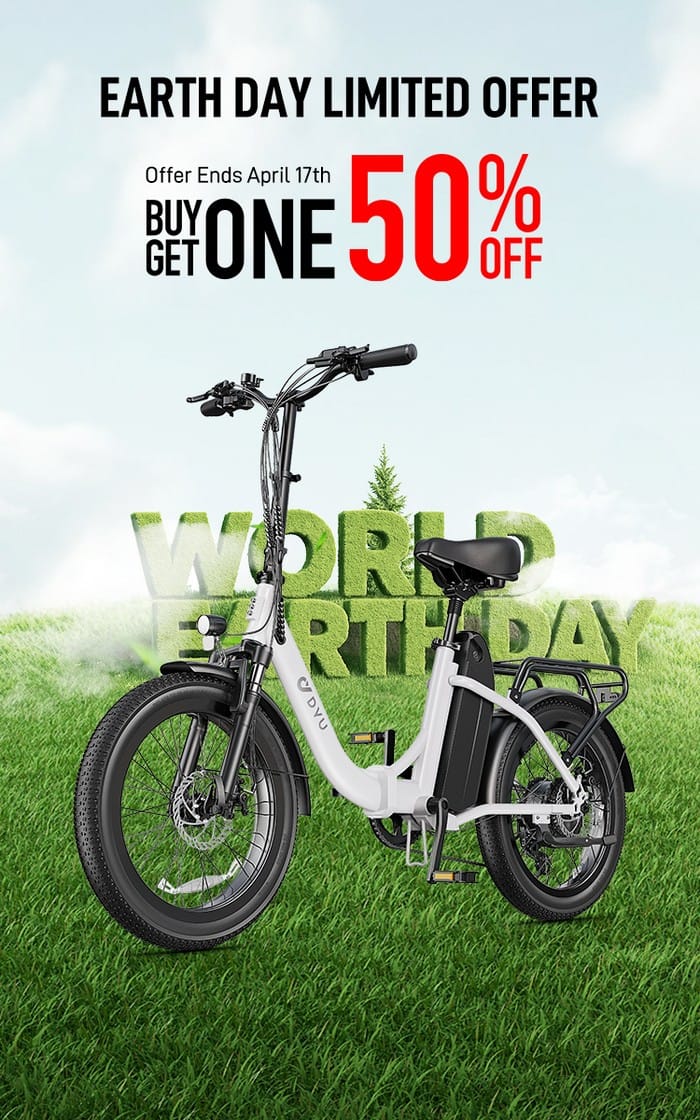Ebikes
The First E-Bike Commercial: How 1970s Ads Tried to Sell “Electric Horses”
🎞️ A Look Back: What the First E-Bike Ads Got Right—and Wrong
In the 1970s, e-bikes were introduced with the aura of science fiction. Advertisements often branded them as “electric horses,” presenting an image of futuristic freedom and effortless mobility. Glossy posters and colourful TV spots showcased young riders, stylishly dressed, cruising smoothly down sunlit boulevards—without a single pedal stroke and with no fumes trailing behind.
The promotional strategies at the time leaned on three major themes:
- Sci-fi excitement: Phrases like “ride an electric horse” played on fantasies of progress and cool technology. To many, it was like stepping directly into the future.
- Effortless commuting: Highlighting “no pedalling” made the product appealing to those who disliked traditional cycling or dreaded arriving sweaty at work.
- Clean, green buzz: Some adverts hinted at the environmental benefits, pointing out the lack of petrol fumes. Yet, they skipped details about battery limitations or real-world energy use.
But the reality was less glamorous. Ads rarely mentioned the short battery range, heavy weight, slow charging, or high price. Instead of real product demonstrations, many relied on concept-art illustrations. As a result, while these campaigns stirred curiosity, they also set unrealistic expectations. Fast forward five decades—modern e-bikes are still marketed with flair, but consumers today have access to detailed specs, reviews, and real-world feedback that make the buying journey more grounded.
⚡ From Concept to Commuting: How E-Bikes Actually Evolved

The transformation of e-bikes over the last half-century has been remarkable:
- Energy & batteries: Early models relied on bulky lead-acid batteries that weighed riders down and offered very little mileage. Modern e-bikes now use compact lithium-ion batteries capable of delivering 30–70 miles on a single charge, with recharge times averaging 3–6 hours.
- Motors & power: The clunky brushed motors of the past have given way to brushless mid-drive or geared hub motors, often exceeding 650W. These provide smoother acceleration, better torque on hills, and in some cases, regenerative braking.
- Smart tech: Riders today benefit from integrated LED displays, app connectivity, pedal-assist sensors, Bluetooth tracking, and enhanced safety features such as e-ABS and automatic lights.
- Design & convenience: With lighter frames, foldable options, and sleeker silhouettes, storing an e-bike in a small flat or taking it on public transport is now far easier.
What was once an experimental curiosity is now a practical commuting solution. E-bikes have shifted from futuristic dream to mainstream mobility tool, bridging gaps in urban transport and reducing car dependency.
🔍 Choosing the Right E-Bike for You: Needs Over Nostalgia
With a vast range of models available—urban folders, hybrid commuters, cargo haulers, and touring machines—the real question is: what do you need the bike for?
| Feature | Foldable Urban E-Bike | Daily Commuter Hybrid | Long-Distance/Touring E-Bike |
|---|---|---|---|
| Example Use | “Last mile” with train travel | 5–15 km city commute | Day-long rides, hills, gravel paths |
| Battery Range | 20–40 mi (32–64 km) | 40–60 mi (64–96 km) | 60–100+ mi (96–160 km) |
| Weight | 14–20 kg | 18–25 kg | 20–30 kg |
| Foldability | Foldable | Non-fold or partial fold | Non-fold |
| Suspension | Rigid frame | Front suspension fork | Full suspension available |
| Storage space | Compact—ideal for flats/offices | Requires bike racks or garage | Best with panniers or cargo racks |
Key buying factors
- Your commute style: For London commuters hopping on trains, a foldable e-bike like the DYU C3 14-inch folding e-bike provides portability and convenience.
- Speed vs comfort: A 250W motor with a capped 15.5 mph speed suits most UK city commutes. For longer or hillier routes, 500W+ motors and torque sensors make a difference.
- Battery planning: Always choose a battery rated at 1.2–1.5x your regular daily distance to avoid running flat mid-journey.
- Storage and portability: Consider whether you’ll need to carry the bike upstairs, store it in a tight hallway, or leave it outside.
- Safety features: Prioritise hydraulic or mechanical disc brakes, integrated lights, mudguards, and e-ABS systems for secure rides.
🤔 Why Ads Still Matter—and How to Read Between the Lines
Even today, e-bike adverts often stretch the truth. Riders should stay vigilant:
- Testing conditions: Battery range advertised in lab settings rarely matches real-world results. Always check rider reviews for accurate figures.
- Speed claims: In the UK, most e-bikes are legally limited to 15.5 mph. Ads boasting higher speeds may refer to non-UK models or restricted versions.
- Added features: Large tyres, racks, or suspension forks add convenience but also extra weight and cost. Decide what is essential to your lifestyle.
- User voices matter: Online forums like Electric Bike Review UK and Eurobike often reveal flaws—like weak displays or noisy components—that brochures skip.
🛠️ My Experience: What Riding an E-Bike Taught Me About Expectations

When I first tested the DYU C3, I wasn’t sure if it could genuinely replace buses or trains. A few rides changed my perspective:
- Charging: A 7.5 Ah removable battery takes about 5 hours to recharge. I simply plug it in overnight and it’s ready each morning.
- Weight: At around 20 kg, it’s manageable but not feather-light. Carrying it upstairs is doable, though slightly strenuous.
- Range reality: The advertised 34 km range translated to about 30 km in mixed conditions, still enough for my city commute.
- Handling: Its 14″ wheels make it agile in traffic but less forgiving on rough roads, compared with larger-wheeled hybrids.
- Safety: The integrated lights, disc brakes, and anti-tamper lock gave me confidence during rides in busy areas.
Over time, the initial novelty gave way to routine. I began timing rides, monitoring tyre pressure, and keeping a charging schedule. Soon, what started as a trial turned into a reliable daily commute alternative.
Final Thoughts & Buying Action Plan
- Reflect on your route: Short urban trips benefit from lighter foldable bikes. Long tours call for larger wheels and powerful motors.
- Battery goal: Aim for a capacity that’s at least 30% more than your typical commute distance.
- Weight vs comfort: Don’t overlook the ride quality of slightly heavier bikes—they may provide better suspension and comfort overall.
- Test ride: Trying before buying remains the best way to evaluate fit, handling, and ride comfort.
- Learn from reviews: Explore trusted sites like ElectricBikeReview and BikeRadar for real feedback.
- After-sales support: Check warranty terms, parts availability, and whether manuals or customer support are accessible in the UK.
🚀 Ready to Ride?
E-bikes have matured far beyond the sci-fi ads of the 70s. They now represent a healthier, greener, and more flexible way to move. Still, the smartest choice comes from matching your lifestyle to the right model:
- Do you want to dodge crowded buses and build fitness?
- Are weekend countryside rides your goal?
- Do you need something compact for shared living spaces?
Answering these questions is the first step toward finding an e-bike that suits not just your commute, but your lifestyle as a whole. Think of it as investing in both freedom and well-being.
FAQ
How far can an e-bike go on a single charge?
Most e-bikes cover 30–70 miles (48–113 km), though rider weight, terrain, and assist level greatly influence results.
Do I need a licence or insurance to ride an e-bike?
In many countries, low-power pedal-assist bikes can be ridden without a licence. Always confirm local laws before buying.
Are folding e-bikes good for commuting?
Absolutely. They’re ideal for short city trips and mixed travel (bike + train). Their compact design is perfect for flats and offices.
What’s the best e-bike for beginners?
Look for lightweight, stable models with clear displays and safe braking. Compact folding bikes like the DYU C3 make great entry-level options.
How can I tell if an e-bike ad is trustworthy?
Focus on core specs like battery size, motor wattage, and weight. Check rider reviews, and whenever possible, test ride before purchasing.
























































Fascinating to see how e-bike ads in the 70s painted them as ‘electric horses’—such a creative spin!
The evolution from lead-acid to lithium batteries is mind-blowing. Tech has come so far!
The ‘electric horses’ concept is cool, but ads today still sugarcoat specs—wish the article called out modern marketing more.